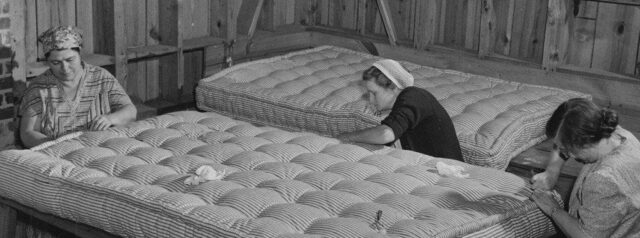
When most people think about their mattresses, “love” probably isn’t a word that comes to mind. Sure, there are those who could happily fall asleep on a bunch of wooden crates smashed into little pieces and strewn across a concrete floor, but the rest of us are a little more sensitive.
Not only that, but we’re constantly bombarded with advertisements that increase our desire for the “perfect mattress” that we know is out there, if only we were able to save up the few thousand dollars it costs to get it. But it’s a lie; we’ll never achieve the indulgence of the optimum mattress.
Even the mattress they’ll someday invent that is formed out of pillows of air kept continuously inflated by the breath of seventeen attractive virgins with built-in kittens for extra softness, will one day be topped by something better.
Although there is no ‘perfect mattress’, you can pick the most suitable mattress, complying with your preferences. For example, if you like to sleep on a memory foam mattress, I would definitely recommend the Loom and Leaf Mattress. With this guide, you can find out whether the mattress is suitable for you.
In light of this, perhaps it’s time to take a little walk down (mattress) memory lane, to better appreciate the mattresses that we’re so lucky to have today.
9No Mattress

Probably about as comfortable as it looks.
It makes sense that the original mattress was, well, no mattress at all. Because you don’t see monkeys catching birds to make fluffy pillows out of their feathers, now do you? (And if you do, please take video; we’re sure it would be hilarious).
Once upon a time, humans made do with sleeping on the cold, hard ground. Kind of makes you wonder – were we just a lot less spoiled back then, or perhaps actually more physically resilient? Because most people above the age of ten seem to have issues with not sleeping on something reasonably soft and comfortable. It seems that if you extend that logic, sleeping on the ground would have been the scourge of early humankind, worse than saber-tooth tigers and toothaches combined.
The original members of humankind must have been pretty ‘B.A.’ indeed to brave the realms of sleep without so much as a snuggly blanket. We can only think that we would have all been a lot more hardcore if we hadn’t gotten so wimpy that we become pain pill poppers after forgetting where we live and spending a night shivering in the gutter.
8Animals Skins/Furs
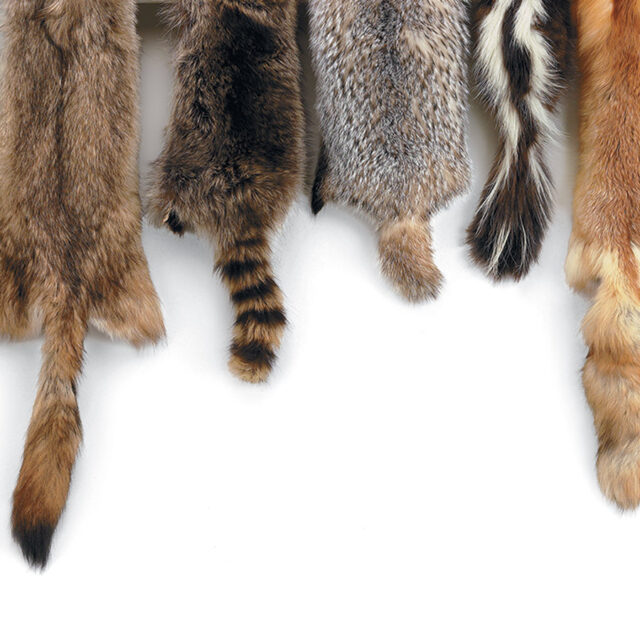
After humans figured out the whole “kill large animals and eat them” thing, they also started to realize that the parts you couldn’t eat could be used for other things, like tools and weapons. Although the process probably did involve quite a lot of hilarious “Edible or Not?” vignettes.
On a side note: as prey to humans, as much as it would blow to get killed and eaten, how much more would it burn you to get killed by a part of your dearly departed cousin who’d mysteriously disappeared a month before? Just saying.
Anyway, the killing of large animals provided skins, and people found all sorts of uses for skins. They used the skins to protect them from the elements in the form of clothing, blankets, and yes, also as protection from the cold, hard ground which had plagued their ancestors so.
Though we’re sure it was better than the alternative, we can’t help but squirm at the idea of getting to smell the leftovers from last winter’s feast every night. Then again, we don’t imagine much of cave life was particularly pleasant to smell.
7Goat Skin Waterbeds

Leave it to the Persians to get a jump on luxury with the invention of the goatskin waterbed thousands of years before the waterbed became a staple of cheesy themed hotel rooms.
6Plant Materials

With the discovery of agriculture, people no longer needed to go out hunting for most of their food. This gave them more time to dedicate to thinking about their comfort, and also more time to gather the raw materials that might provide said comfort.
During this period, the palm bough mattress became especially popular. Agriculture also increased the availability of by-products such as hay, another mattress-stuffer.
And along with these new materials came the animals that liked to hang out in the materials in their natural state – all types of lovely vermin. Before regular cleaning was invented, beds were pretty much guaranteed to contain animals and insects.
5Fabrics For All!
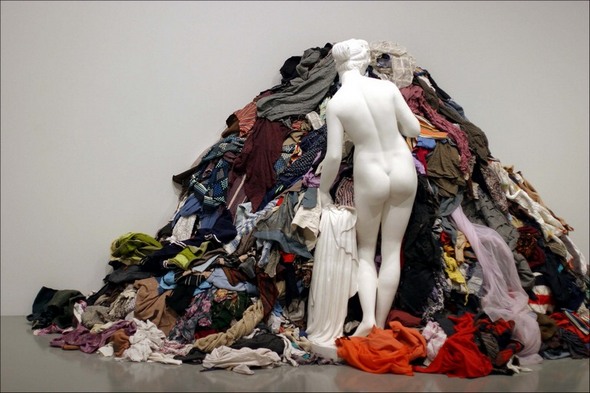
People have made fabrics, starting with linen, then wool, then cotton, for thousands of years. Fabrics provided an excellent substitute for animal skins when it came to making clothing and home goods such as blankets and yes, mattresses.
Problem was when fabrics were used for mattresses, they weren’t always of the best quality. Economics comes into play, and people decided to reuse filthy rags to cover mattresses instead of wasting money on precious, virgin cloth.
And don’t forget the fact that regular cleanings of bedding didn’t become a general practice until much, much later. Vermin don’t make much of a distinction between fabric and fur, as long as it doesn’t come in regular contact with soap and water.
4Feather Fillings
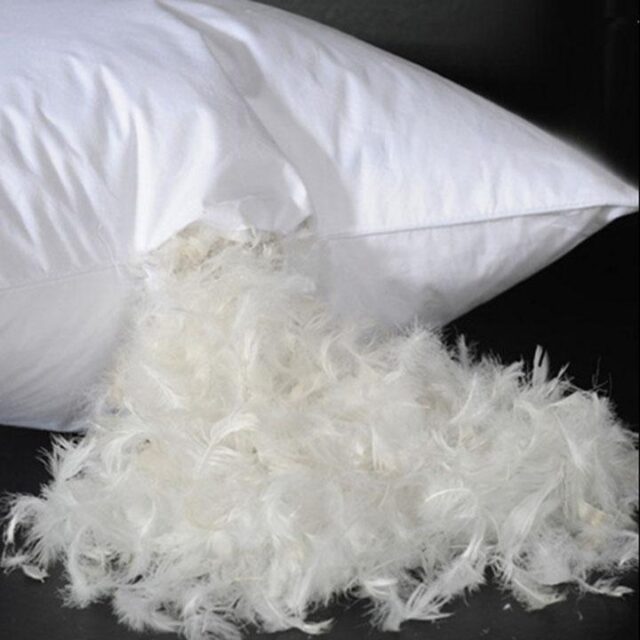
Another popular way to make mattresses became to fill pouches with down and feathers from animals such as ducks and geese. However, when these methods were introduced, they didn’t exactly have the cleaning of these things down to a science. So many times you ended up with all of the soft goodness of the feathers, but also all of the nasty grossness of the bugs and microorganisms that liked to call the feathers home.
3Roping it Out
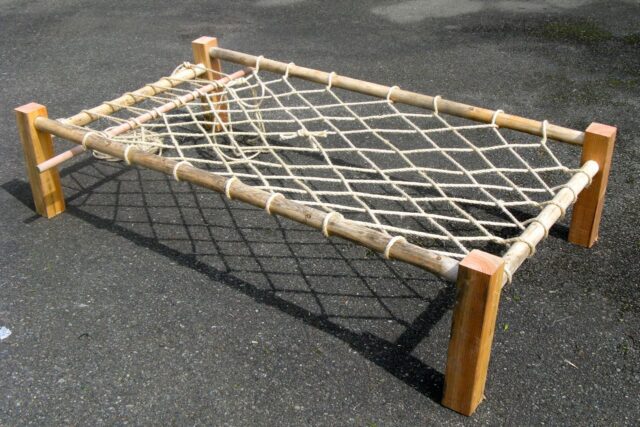
At some point, people decided to get all technological on mattresses, and not just fill a big pad with something soft. And thus, the rope mattress was invented. The benefit was that you’d get a relatively even surface from using something like ropes stretched across a frame. The downside, of course, was the work. When people started to make a frame strung with ropes, they had to tighten those ropes regularly, or else you’d wind up in a slowly sagging mattress that would destroy your posture and possibly cripple you over time.
The downside, of course, was the work. When people started to make a frame strung with ropes, they had to tighten those ropes regularly, or else you’d wind up in a slowly sagging mattress that would destroy your posture and possibly cripple you over time.
2The Springs’ the Thing
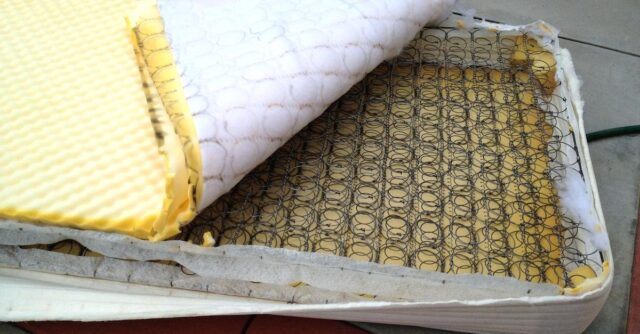
One problem with taking a random pouch and stuffing it with the material is that the material tends to compress and settle over time. This leads to a lumpy mattress, and no one likes a lumpy mattress.
Springs lead to an increase in mattress comfort… except, of course, for possibly causing pain on pressure points coming in contact with the springs, due to reduced blood flow. Wait, isn’t this the reason that we got away from sleeping on rocks in the first place?
When most people think about their mattresses, “love” probably isn’t a word that comes to mind. Sure, there are those who could happily fall asleep on a bunch of wooden crates smashed into little pieces and strewn across a concrete floor, but the rest of us are a little more sensitive.
Not only that, but we’re constantly bombarded with advertisements that increase our desire for the “perfect mattress” that we know is out there, if only we were able to save up the few thousand dollars it costs to get it. But it’s a lie; we’ll never achieve the indulgence of the optimum mattress.
Even the mattress they’ll someday invent that is formed out of pillows of air kept continuously inflated by the breath of seventeen attractive virgins with built-in kittens for extra softness, will one day be topped by something better.
In light of this, perhaps it’s time to take a little walk down (mattress) memory lane, to better appreciate the mattresses that we’re so lucky to have today.
1Man-Made Materials
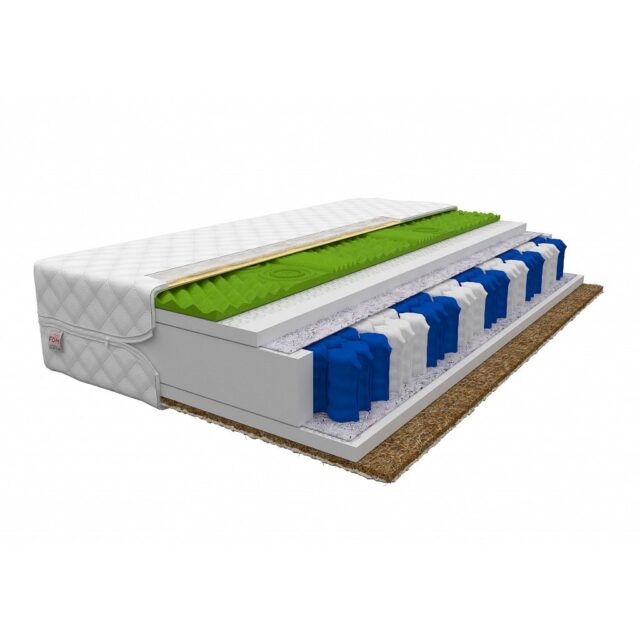
Mattresses didn’t change much after that until we reached the era of man-made materials. What splendid times! Mattresses made of man-made materials didn’t come pre-filled with pestilence, and as long as they were cleaned regularly, you’d never have to worry about bugs again!
Well, scratch that. Bugs are adaptable, and they can move into your man-made mattress just as easily as into one made from different materials.
Additionally, with the introduction of new materials came a host of new issues. In the great boom era of plastics, foams, and manufactured chemicals used for things such as flame retarding, scientists got so carried away that they forgot to do a little something known as making sure that their concoctions wouldn’t negatively affect people’s health. For example, some chemicals used in mattresses are thought to cause headaches, muscle pain, and breathing issues.







